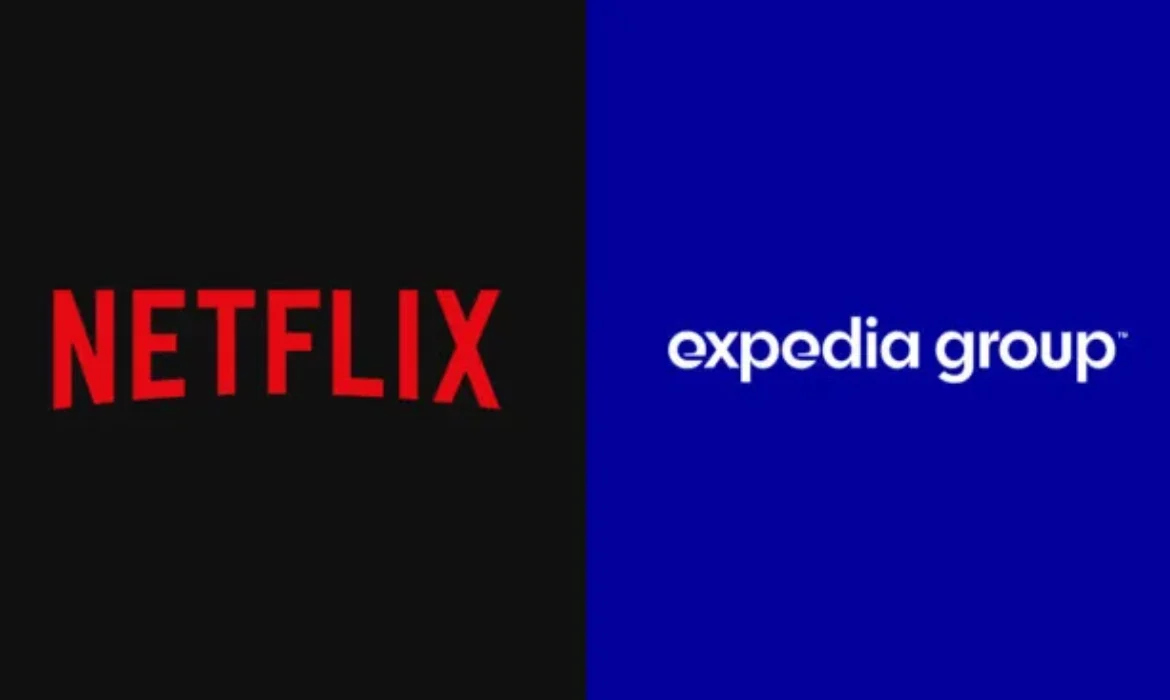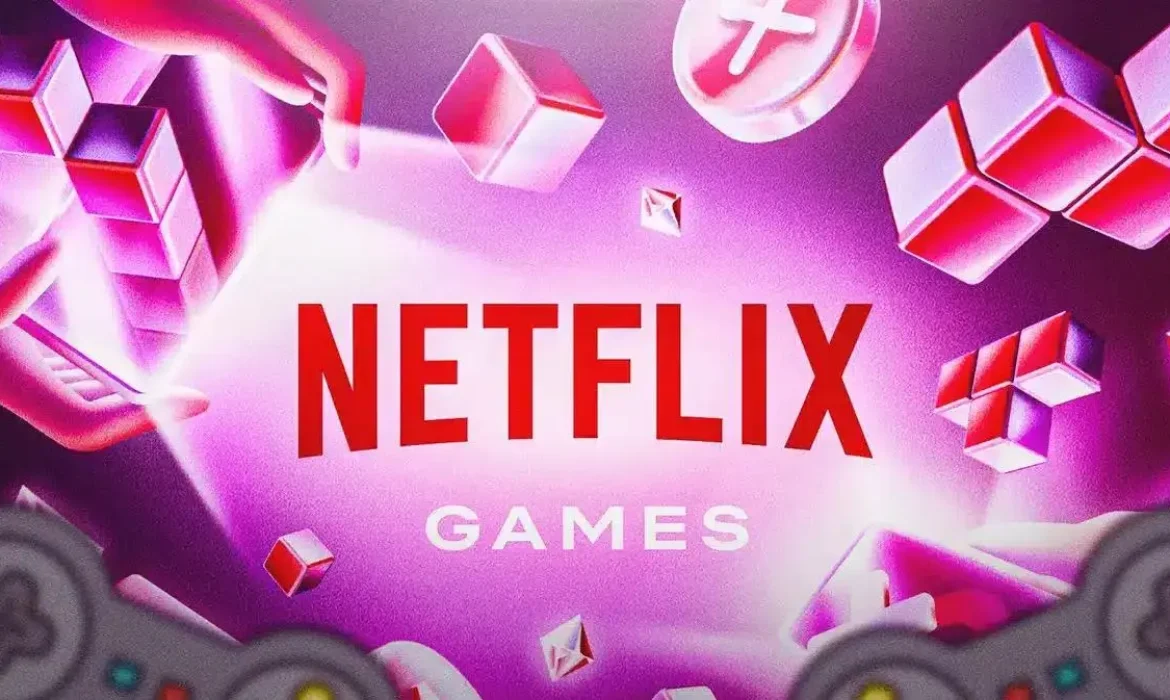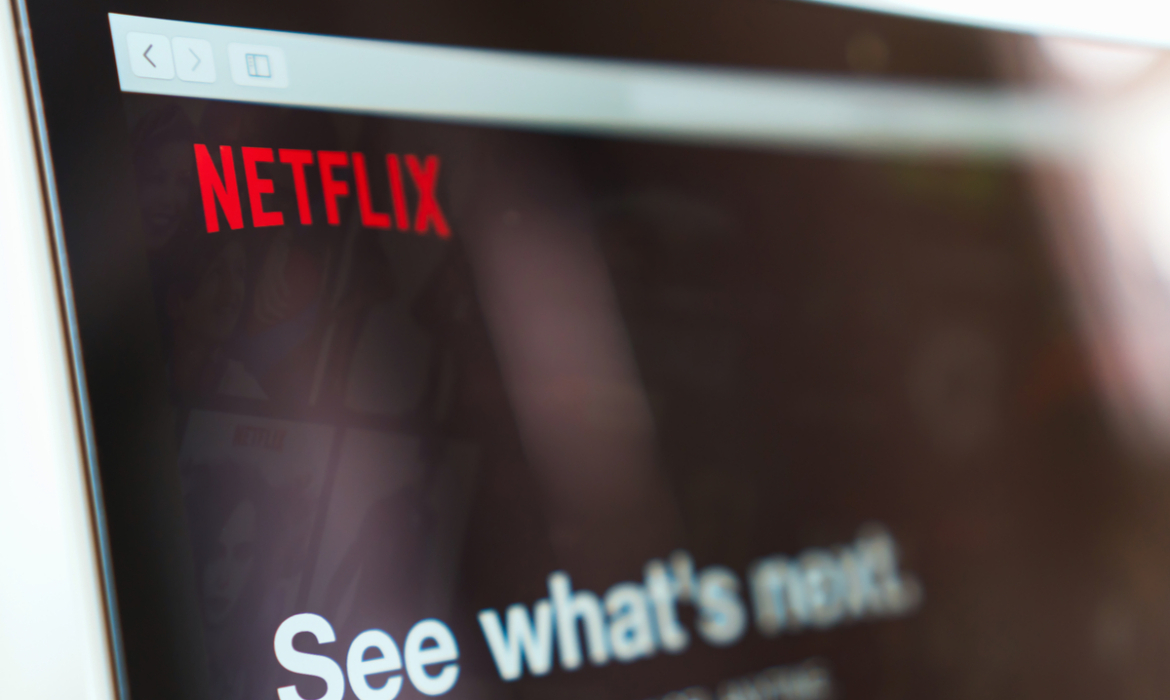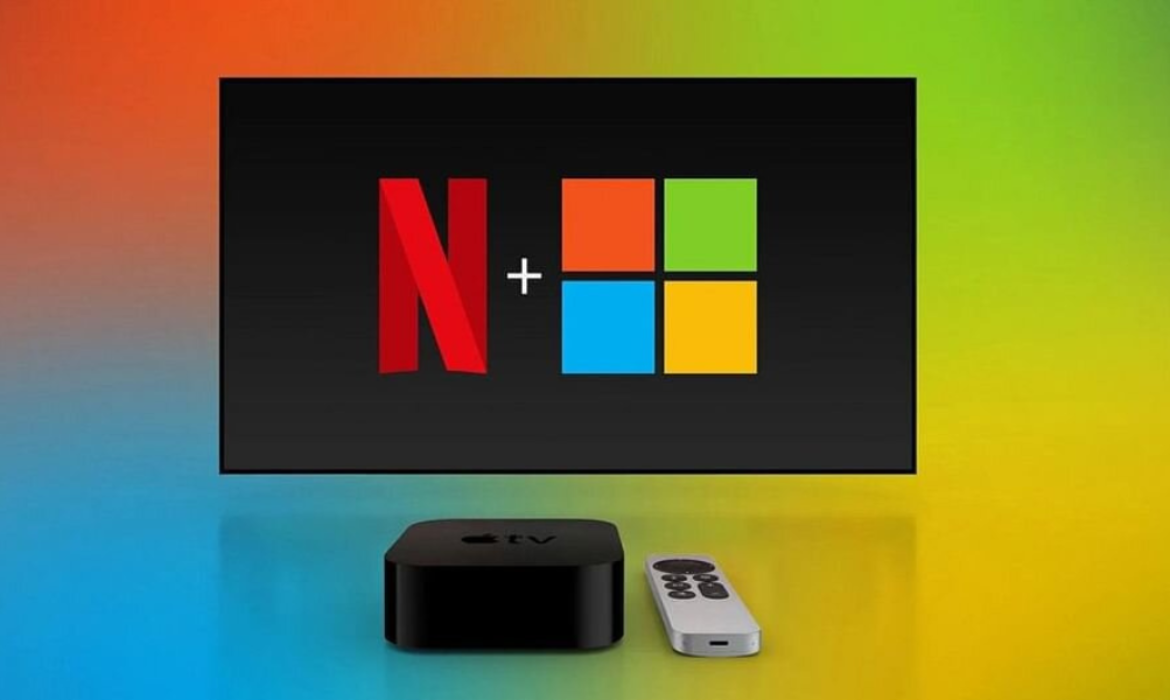Expedia and Netflix Collaborate for First-of-its-kind Global Advertising Campaign
Expedia and Netflix have collaborated on a one-of-a-kind advertising campaign. It is intended for Netflix’s global monthly active users (MAUs) on the ad-supported tier. The goal of the campaign is to seamlessly integrate contextually appropriate ads into the Netflix viewing experience, improving the platform for users and providing partners with a global advertising platform. Furthermore, through this partnership, Netflix will be able to provide marketers and members with better multi-country advertising options while also supporting Expedia Group’s efforts to expand globally.
First-of-its-kind global advertising campaign
For 2024, Expedia will be the first worldwide advertising partner of Netflix to launch a multimarket campaign on the streamer’s ad-supported plan. The collaboration serves as evidence of why companies are placing their bets on Netflix’s emerging ad-supported tier. It offers global reach and the ability to engage specific audiences where they are watching TV when linear TV usage declines. A range of advertisements tailored to language and culture in the United States, Canada, Mexico, the United Kingdom, France, Germany, Australia, Japan, and Brazil will be displayed on the travel booking website. In the United Kingdom and Brazil, Expedia will also serve as an Alpha measurement partner.
Read More: Netflix May Monetize Its Games Platform with In-App Purchases and Ads
Tailored advertising
With campaigns targeted at the more than 23 million global monthly active users of the streamer’s ad-supported tier, Netflix and Expedia are showing their international strength. Netflix will start running localized creative in the respective markets this month as part of the partnership. The content was created by an internal creative team and is part of Expedia’s “Made to Travel” brand platform. Expedia will use the agreement to run a range of nationalized advertisements, including 15-, 30-, and 60-second spots.
The first execution will debut on Netflix in Japan with the 60-second anthem spot “Two Step.” It was directed by Hiro Murai (“Atlanta,” “The Bear”). In the commercial, a group of friends from Japan travel to the United States to follow their love of line dancing.
Netflix to remain the hub for the campaign
In each of the markets, advertisements will also be displayed on platforms other than Netflix. However, the streamer will serve as a hub for the entire campaign. Advertisers have been eager to capitalize on Netflix’s global reach, which sets it apart from other leading streaming services. Since its ad-supported tier’s launch just over a year ago, the streamer claims 23 million users worldwide have used it. U.S. ad subscribers, however, make up a very small portion of that total.
Here’s what they said
Amy Reinhard, President of Advertising at Netflix said,
This first of its kind partnership will offer our engaged ad-supported members contextually relevant ads creatives, making the viewing experience even more enjoyable, while also making Netflix a global destination for our advertising partners.
Jon Gieselman, president of the Expedia Group added,
As global consumer habits rapidly evolve, we are always looking for innovative opportunities to showcase our brands and story-tell locally. Netflix’s sophisticated product allows us to target relevant audiences with impressive reach. We aren’t afraid to be first and I look at this partnership as just the beginning.
Read More: Netflix Agrees to $5 Billion Deal to Stream WWE’s Flagship RAW Show
Netflix Agrees to $5 Billion Deal to Stream WWE’s Flagship RAW Show
Netflix has agreed to a $5 billion deal to broadcast WWE’s RAW program in the United States over the next decade. The deal will come into effect from January 2025. Traditionally regarded as World Wrestling Entertainment’s flagship show, RAW will not be available on linear television for the first time in its 31-year history. This deal represents by far Netflix’s largest investment in live sports. It will greatly increase Netflix’s utilization of the equipment needed to stream live sports events.
WWE’s RAW will now stream on Netflix
The streamer is committing a staggering $5 billion to the deal, which is worth $500 million annually for ten years. After the first five years, Netflix can choose to terminate the agreement. It can also decide to keep it in place for an extra ten years. According to sources, WWE and NBCUniversal have a current five-year deal worth between $250 million and $260 million annually for the US rights to “RAW.”
Increasing financial strains
WWE’s decision to remove RAW from the USA network, where it is the most popular show, is also a reflection of the financial strain that traditional cable television operators are facing as more viewers switch to streaming. Through the deal, WWE’s reach is significantly increased, and Netflix will now be able to stream weekly live appointments. Under the terms of the agreement, Netflix will host all WWE programs outside of the United States. Every WWE program, including SmackDown, pay-per-view events like WrestleMania and Royal Rumble, documentaries, original series, and other projects. Over time, more nations and areas will be added.
Read More: Netflix Striving to Expand Ad-Supported Format Reach and Appeal
Netflix’s foray into sports live stream
To broadcast a wide variety of content, including stand-up comedy, sports, and live news and award shows, Netflix has been enhancing its live streaming capabilities. Netflix, which has stated time and time again that it is not particularly interested in large-scale sports rights, is investing a significant amount of money in livestreaming under this agreement. After experimenting with live-streaming comedic shows at first, Netflix has now added award shows, reality shows, and live sporting events to its lineup.
Here’s what they said
Mark Shapiro, the chief executive of TKO, formed following the merger of WWE and the Ultimate Fighting Championship (UFC) said,
This deal is transformative. It marries the can’t-miss WWE product with Netflix’s extraordinary global reach and locks in significant and predictable economics for many years. Our partnership fundamentally alters and strengthens the media landscape, dramatically expands the reach of WWE, and brings weekly live appointment viewing to Netflix.
Bela Bajaria, Netflix’s chief content officer, added,
We are excited to have WWE Raw, with its huge and passionate multigenerational fanbase, on Netflix. By combining our reach, recommendations, and fandom with WWE, we’ll be able to deliver more joy and value for their audiences and our members. Raw is the best of sports entertainment, blending great characters and storytelling with live action 52 weeks a year and we’re thrilled to be in this long-term partnership with WWE.
Read More: Netflix May Monetize Its Games Platform with In-App Purchases and Ads
Netflix May Monetize Its Games Platform with In-App Purchases and Ads
Renowned streaming giant Netflix is allegedly looking into new ways to make money as it prepares to add in-app purchases and adverts to its gaming platform. The business has been having constant conversations about ways to monetize its gaming platform. For the past two years, a ton of mobile games have been available for free download for Netflix subscribers.
Netflix games might introduce ads and in-app purchases
Since entering the market, Netflix has increased its presence in the gaming industry and released a significant number of games. Since players have paid for the premium membership, the game is free of charge. However, the company is looking to change its current business model. In recent months, internal discussions have been held to discuss how to proceed with this plan. Netflix has been investigating different approaches to making money off its gaming platform. These consist of choices like implementing in-app purchases, setting a price for premium games, and adding advertisements to games that are available to subscribers in the ad tier.
The company has over 75 mobile games available, including Grand Theft Auto, Love is Blind, Monument Valley, and Oxenfree. The report claims that Netflix intends to charge for premium game titles and monetize game placement. The business declared last year that it didn’t worry about in-game and advertisement payments. In the world of mobile gaming, where consumers are predicted to spend $111.4 billion on games by 2024, these strategies are widespread (and successful).
Netflix games in public tests
Netflix has also established studios in Southern California and Finland, as well as acquired several IPs and development facilities. Additionally, there are rumors that the company is working on a PC game, which may be the reason it needs to increase revenue to finance the project and make more investments in the company. It would be a significant departure from the current revenue model if it proceeded with this plan and put the aforementioned into practice. As it stated during the April 2023 earnings call that it does not want to add in-app purchases and advertisements to the games on the platform, Netflix has so far offered all of the games for free.
Read More: Epic Games Prevails in the Antitrust Trial Against Google
Current games hosted by Netflix
There are 86 games on Netflix right now. Furthermore, there are almost 90 more in development, some of which are based on Netflix’s original series. Over the previous year, the company released about 40 games, including third-party games like Football Manager 24 Mobile, and developed titles like Oxenfree 2: Lost Signals and Netflix Stories: Love is Blind.
Grand Theft Auto: The Trilogy – The Definitive Edition, which the company released last month, also brought the well-known GTA franchise to the platform. The company is creating video games based on the well-liked television program Squid Games. In this viewers will engage in competitive gameplay. Additionally, Super Evil Megacorp is developing a game based on the recently released Netflix film Rebel Moon, and a game based on Money Heist was just released.
Slow Netflix games subscriber rate
However, not many people have played the games and their adoption has been sluggish. Only 1% of subscribers played the games, according to data that was made public after the service’s first year of launch. This percentage hasn’t changed much. Even after more games have been launched, and despite Netflix Games having spent close to $1 billion, the company intends to increase revenue to succeed with these new concepts.
Read More: Developers Can Publish Instant Games Directly To Facebook At Any Development Stage
Netflix’s recent password-sharing stint
According to the report, the streaming service originally opposed enforcing strict password-sharing policies and launching an ad-supported tier. For the first time in more than a decade, they lost thousands of subscribers in 2022. This led them to rethink their decision. It would make sense for Netflix to include in-game purchases and advertisements to monetize its game content. At the beginning of 2023, the company’s growth slowed, which resulted in a 3% reduction in its workforce.
Here’s what they said
Netflix co-CEO Greg Peters says the company wants to provide a unique gaming experience. It will provide creators with the flexibility to make games that are only intended for player enjoyment. They will be free from the worry of other revenue streams like in-game purchases or advertisements.
We want to have a differentiated gaming experience and part of that is giving game creators the ability to think about building games purely from the perspective of player enjoyment and not having to worry about other forms of monetization, whether it be ads or in-game payment.
Read More: Nazara Technologies Partners with 4 Gaming Studios to Publish 5 Games
Netflix Striving to Expand Ad-Supported Format Reach and Appeal
Netflix is admitting that it still has ways to go in order to scale the necessary advertising reach and subscriber size with its ad-supported model. It claims that by taking a customer-focused approach and providing advanced features to advertisers, they may ultimately surpass competitor streaming services in the advertising market. Netflix suggests that its ad-supported tier serves as a backup plan for users who express dissatisfaction with price increases. It seems that the streaming behemoth believes its competitors are doing advertising incorrectly. Some of its streaming competitors haven’t yet done as well in creating an advertisement-friendly environment.
Netflix wants to educate consumers about the ad-supported tier
According to Netflix, part of its mission is to inform customers about what to expect from their Netflix advertisements. This allows people to consider what, given their unique tastes, would be the best decision for them. The secret is to use the data collected as more people use the ad-supported tier to build models and capabilities that minimize repetition and intrusiveness while delivering relevant ads and a tailored experience.
Insights on new subscribers to ad-supported plans
Some reports state that new customers to the ad-supported plans see four minutes or less of advertising every hour, whilst those who cancel and re-up only view 60 seconds or less. This is before the amount of ad time is progressively increased once more. Resulting in rumors that a sophisticated method of desensitizing ad-verse consumers is part of Netflix’s educational process. However, since last May, six months after the plan’s introduction, when the business claimed to have drawn close to 5 million sign-ups worldwide, Netflix has not made available the precise number of with-ad members. According to reports from July, out of over 75 million Netflix members in the United States, 1.5 million of them were using the advertising plan.
Read More: Meta Contemplates Ad-Free Subscriptions, Targeting Indian Market
Netflix’s Ad Formats Expansion
Netflix announced the start of title sponsorships for seasons, series, and new domestic live sports events in addition to the growth of its ad formats. It includes the addition of a binge format, as part of its effort to realize that potential. Apart from introducing ad buys for its top 10 content selection, Netflix is collaborating with Microsoft, an ad tech partner, to provide other programmatic ways to access its ad inventory. Future expanded targeting capabilities should be available soon, as improving ad relevance is the first stage.
Challenges Netflix Might Face
Customers who use streaming services aren’t used to any kind of advertisement environment. In the past, cord-cutters sought to save money by forgoing the pricey cable bundle. In the process, they improved their viewing experience by being able to watch content whenever they wanted, without interruptions. Priorities are ranked highest for measurement. Therefore, Netflix is working to give comparable measurement capabilities to service a large list of partners across other nations in addition to launching a measurement relationship with Nielsen in the U.S.
A chance for Netflix
Just one year into their agreement, Netflix started a restructuring of its advertising partnership with Microsoft in July. In order to revitalize the developing area of its business, the streaming juggernaut decided to lower its ad pricing. Netflix leaders within the firm voiced their displeasure with Microsoft’s ad inventory and sales performance. Microsoft was forced to make the maximum amount stipulated in the agreement reached more than a year ago. This was a result of weak sales and a smaller-than-expected ad market. Microsoft had been chosen by Netflix as a partner at the beginning of its advertising business.
Read More: Netflix Removes Password Sharing, What’s It Say For Subscribers?
Netflix Is Back In Game With New Ad Plans and Subscriber Growth
Netflix put an end to the subscriber losing streak in Q3 after gaining 2.4 M new subscribers. Reed Hastings Co-Founder and Co-CEO said, “Thank God, we’re done with shrinking quarters. That’s a big feeling of — we’re back to the positivity.”
Why it matters: The streaming giant had a rough patch in 2022 but rebounds in the third quarter with ad-supported tailwinds.
Quick Recap: Over the years, Netflix pitched for the ad-free model so the creators can focus on content than monetization. However, it reshaped its ad business with AVOD services to deal with losses and contribute to its growth. The company has witnessed gains after unveiling its Basic Ad plan in 12 countries, starting from Nov 3 in the U.S.
Details: In an investor call, the company said they are focused on new revenue streams, be it -the content side, advertising, or paid sharing and so they will no longer provide guidance on subscribers.
It is forecast to add 4.5 million subscribers next quarter, a bullish estimate considering it lost over 1 million subscribers in the first half of the year. The company touted newer hits, such as “Monster: The Jeffrey Dahmer Story,” and season 4 of “Stranger Things” that helped to move the needle last quarter.
By Numbers: CNBC reported the following financial numbers:
Revenue: $7.93 billion vs $7.837 billion, according to Refinitiv survey.
Expected global paid net subscribers: Addition of 2.41 million subscribers vs. addition of 1.09 million subscribers, according to StreetAccount estimates.
Will Ads add to the Growth?
The streamer said it was “very optimistic” about its new advertising business. COO Greg Peters anticipates sign-ups for Netflix Basic with Ads will add net new subscribers rather than existing subscribers switching off from current plans.
“We don’t expect a material contribution in Q4’22 as we’re launching our Basic with Ads plan intra-quarter and anticipate growing our membership in that plan gradually over time. Our aim is to give our prospective new members more choice – not switch members off their current plans. Members who don’t want to change will remain on their current plan, without ads, at the current price.”
Subscription growth is forecasted based on its upcoming content slate and the typical seasonality that occurs during the last three months of the year. With a lower price, a business will have a balance between monetizing with ads and providing access to all their great content.
Strong Competition
Netflix is in a highly competitive industry with viewers having a vast choice- from linear TV to streaming, YouTube to TikTok, and gaming to social media. Netflix noted its competitive advantage in a note to investors, saying:
“Our competitors are investing heavily to drive subscribers and engagement, but building a large, successful streaming business is hard – we estimate they are all losing money, with combined 2022 operating losses well over $10 billion, vs. Netflix’s $5 to $6 billion annual operating profit.”
The streaming war is real. Streaming subscribers are not churning away because they are switching to other providers, not stopping streaming. The streaming industry is more competitive and ad-supported than ever before, but it still has the potential to evolve. Reeds explained that Netflix and Disney are two big brands in the premium space. And they are battling to provide the best content and low prices, basically all the competitive dynamics.
Ad inventory and targeting
Netflix is completely sold out on its ad inventory for the launch as the initial demand was very strong. This shows that advertisers are interested in the proposition of bringing their brands and their ads on Netflix. It is also building in a lot of capabilities over the next couple of quarters that will be important to advertisers to make that advertising offering increasingly attractive.
Netflix accelerated the release of its ads tier, which is why it has limited targeting options. Right now. they will have basic targeting capabilities with Basic Ad plans. Gregory K. Peters COO & Chief Product Officer said, “we do have relatively basic targeting capabilities in terms of contextual targeting, genre, et cetera.”
He further added, “Now our job is to move from that into more of what we expect from a digital world, where we have 100% signed-in audience, fully addressable, fully targetable, and so we can start to layer in additional targeting capabilities over time.”
Privacy is also a priority for Netflix. And that is where Microsoft fits the bill. Despite having deeper roots in connected TV advertising than Microsoft, the industry was surprised by Netflix’s ad sales partnership with Microsoft. Peters said, “We’re very cognizant of privacy. And all of the data that we use will just be used to basically deliver more relevant ads offering on Netflix, and we’re not using that data in any way, shape or form for a profile building off Netflix.”
Peter believes Microsoft has the go-to-market capability of Netflix. With the joint capacity growth, they will be able to serve the advertisers better. Netflix recently announced measurement partnerships – DoubleVerify and Integral Ad Science to handle ad verification, viewability and brand safety, and with Nielsen for the audience measurement.
Big change in account sharing
Netflix has finally cracked down on password sharing which has eaten into its bottom line. The streamer will monetize account sharing and will roll out in early 2023. The ability for borrowers to transfer their Netflix profile into their own account, and for sharers to manage their devices more easily and to create sub-accounts (“extra member”), if they want to pay for family or friends. In countries with a lower-priced ad-supported plan, the streamer expects the profile transfer option for borrowers to be especially popular.
Peter said they have been working to find a balanced approach that supports customer choice and customer-centricity. But also will make sure that “as a business, we’re sort of getting paid when we’re delivering entertainment value to consumers.”
Interesting Read: Have You Played Netflix Games?
Have You Played Netflix Games?
Netflix is becoming more aggressive in its push into gaming, but less than half of the streaming giant’s subscribers are playing at the moment. In fact, it plans to double its video game catalog by year’s end. Games have been rolled out since November to keep users engaged between show episodes. The games are accessible to subscribers on the Netflix app.
Isn’t Netflix streaming service, why games?
In a streaming market dominated by Netflix, Amazon Prime Video, Hulu, and Disney Plus are its most obvious competitors. However, Netflix has other plans. Rather than competing for the title of leading streaming service, it vies for users’ attention.
Gaming is therefore an appropriate addition to its entertainment offerings. In between movies and shows, subscribers can play games on Apple iOS and Android devices. Netflix’s subscriber base has also been declining, and it’s not surprising that Netflix is interested in exploring a different demographic.
Over the past year, Netflix has acquired three mobile game studios in order to broaden its entertainment offerings. Recently it acquired Finnish developer Next Games for a total value of $72 million. As per stats obtained by CNBC, Apptopia estimates that Netflix games have been downloaded 23.3 million times, with an average daily user of 1.7 million people.
That may sound impressive on paper, but it represents less than 1% of Netflix’s 221 million subscribers. This data appears to indicate that approximately 200 million people who have access to Netflix’s game library are currently not playing them or are unaware of its existence.
The reason? A big problem with Netflix is that not many of its subscribers care, and it does not spend much on PR campaigns. Despite owning all three game studios, the company spends more on one big-budget movie than it does on all three. However, Netflix is now bringing AVOD to the forefront, hopefully selling more subscriptions while compensating for any revenue losses (and increasing revenue).
The importance of games to Netflix’s overall strategy has arguably grown in recent months, as the company competes for user attention more aggressively. Netflix lost nearly a million subscribers in the Q2, after losing 200,000 in the first — its first major subscriber decline in more than a decade.
Interesting Read: AVOD Surprise: Netflix Advertising Powered By Microsoft
TikTok, a strong competition
Video games are a multi-year endeavor that requires a dedicated and talented team. Even though Netflix produces good games like Stranger Things, Exploding Kittens, or Moonlighter, it takes more than a few titles to entice the gamers away from their Xbox, Playstation, or Apple Arcade and play them. Netflix understands that apps like TikTok are its main competitors for mobile attention.
Netflix named Epic Games and TikTok as two of its main competitors for people’s attention. The company claimed they are in the early stages of expansion into games and view it as another new content category. A key benefit of the strategy for Netflix is that it can drive engagement beyond the show’s initial release and revenue.
A lot of ambiguity
Netflix has been tight-lipped about how it intends to make video gaming a core component of its strategy. According to CNBC, Netflix appears to have taken a risk, as COO Greg Peters stated last year that the company was “many months and really, frankly years” into learning about the gaming industry. In the Q4 earnings call, he also said,
“We’re going to be experimental and try a bunch of things. But I would say the eyes that we have on the long-term prize really center more around our ability to create properties that are connected to the universes, the characters, the stories that we’re building.”
Leanne Loombe, Netflix’s head of external games, said during a panel at the Tribeca Film Festival in June.
“We’re still intentionally keeping things a little bit quiet because we’re still learning and experimenting and trying to figure out what things are going to actually resonate with our members, what games people want to play.”
The streaming service hinted earlier this year that it would license popular intellectual property for its new gaming offerings. However, there are no details on investment in this capital-intensive segment.
As projected by Apptopia, Netflix games have less than a quarter of the downloads of the top mobile games. Examples include Subway Surfers, Roblox, to name a few and each has over 100 million downloads. As quoted by CNBC, Netflix co-CEO and co-founder Reed Hastings said earlier,
“We’ve got to please our members by having the absolute best in the category.“We have to be differentially great at it. There’s no point of just being in it.”
Despite that, Netflix plans to double the number of games in its library from 24 to 50 which will also include Queen’s Gambit Chest based on the show by the end of this year. Netflix’s games aren’t attracting anyone despite a solid list and a small percentage of subscribers playing them. On the other hand, there are hundreds of lousy mobile games that have twice as many downloads.
Evidently, gaming is still in the infant stage for Netflix. Considering the company is looking to reduce expenses, is it worthwhile to invest more money in this gaming experiment?
Interesting Read: The Journey From Deterministic To Probabilistic Marketing
AVOD Surprise: Netflix Advertising Powered By Microsoft
Netflix is building its advertising business and the streaming giant has signed Microsoft as its first ad tech partner. In April, Netflix surprised the world with the news that it plans to launch an ad-supported tier. Industry watchers were expecting that Netflix was close to picking an advertising platform to help it build the ad-supported tier of service.
Why Microsoft of all the choices?
Microsoft Advertising is the dark horse contender for the Netflix account and a positive surprise for the industry. Notably, other potential adtech partners such as FreeWheel or Google have interests competitive to Netflix’s. They both sit inside companies that have their own content plays on streaming TV. This likely knocked them out of the race.
Prior to its acquisition of Xandr, Microsoft was not even considered a serious programmatic competitor in the industry. As an early, dominant player in programmatic display advertising, Xandr (formerly AppNexus) started focusing on the TV/video ad space after being acquired by AT&T in 2018.
Xandr is well suited to build Netflix’s ad operation from scratch, a task that won’t be easy but isn’t new for the company. The ability to provide privacy, combined with an established ad tech stack and a strong ability to iterate quickly, helped Xandr push over the finish line. Greg Peters COO and CPO said,
“Microsoft has the proven ability to support all our advertising needs as we work together to build a new ad-supported offering. More importantly, Microsoft offered the flexibility to innovate over time on both the technology and sales side, as well as strong privacy protections for our members. “
Interesting Read: Marriott International : A Hotel or An Ad Tech Company?
What does this mean for advertisers?
Marketers looking to Microsoft for their advertising needs will have access to the Netflix audience and premium connected TV inventory. The Microsoft platform will be the exclusive provider of all Netflix ads.
In the future, a Netflix subscription with ads at a lower price may entice value-seeking customers. With Netflix entering the ad-supported streaming world (AVOD), advertisers will have access to a wide range of premium inventory.
As AVOD continues to expand, this partnership not only supports the momentum but also creates more competition in the field. The recent Disney partnership with the Trade Desk also gives advertisers access to more premium AVOD inventory.
Interesting Read: Connected TV Explained: The Essential Glossary Of CTV
Why do we care?
With Netflix getting into the AVOD market, the equation changes entirely for TV watchers who compare steep cable subscription fees with rising streaming costs.
CTV advertising is known for its chaos, consumer dissatisfaction, and controversy. Netflix has never faced any of these issues. The biggest challenge will be to maintain the balance between efficient monetization and retaining subscribers who are used to ad-free content.
The question of the hour: Does this partnership really push the envelope on ad innovation?
Certainly, Microsoft brings gaming to the table, where there are opportunities and innovation, but there is still much room for development. If It could be magic if these new partners are able to translate this kind of next-gen thinking into the more traditional streaming TV ad ecosystem.
Interesting Read: Is Microsoft Reinventing Its Ad Business With Massive Acquisitions?








